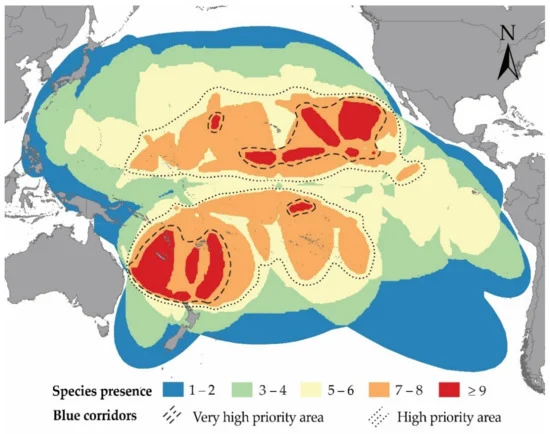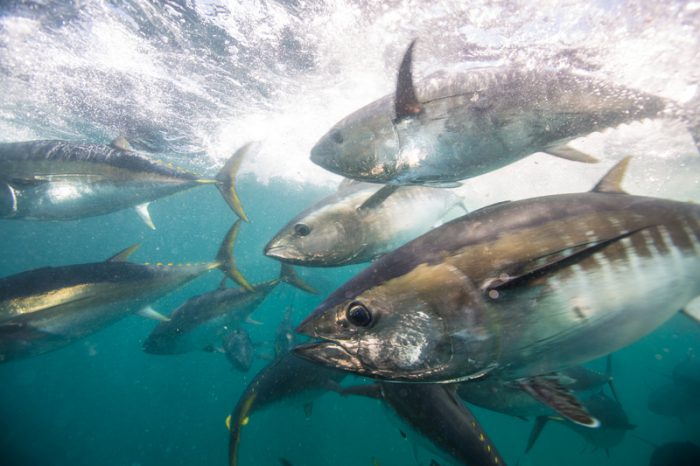Fish stocks—the amount of fish living in a given area—are down around the world. And it's no secret why.
Humans have overfished many species—they have caught too many fish for those populations to be replenished.
For fish populations of large ocean fish (like tuna, marlin, and swordfish) to be healthy—and for fishing to be sustainable—a certain amount of adult fish need to be able to spawn, or mate to produce young. One way to help them do this is to protect their spawning grounds (the part of the ocean where they return every year to mate).
But many large fish travel all over the ocean. So to protect them, we try to find out where they like to travel the most—these areas are known as blue corridors–and we protect those areas.
Mapping the big fish

This map shows how the paths of the eleven fish species overlap. The orange and red areas are the spots the scientists say need the most protection. (Relano and Pauly, Sustainability, 2022)
This is the aim behind a new study that has tried to map out fish traffic in the Pacific Ocean.
Researchers at the University of British Columbia (UBC) have estimated the favourite swimming paths of eleven common fish species. This includes five tuna species (skipjack, yellowfin, bigeye, albacore, and pacific bluefin), four spear-nosed speedsters (swordfish, striped marlin, black marlin, Indo-Pacific sailfish), as well as mahi-mahi and wahoo.
This might sound simple, but it is anything but. After all, the ocean is massive, and fish can travel anywhere that they want.
To overcome this challenge, the researchers have used two important bits of data about each species: Where the fish spawn and where the largest numbers of them are caught.
They then put this data together to estimate the migration loops across the ocean that the species would most likely travel through. By doing this, they have drawn out the blue corridors that need protecting.
Keep the fish traffic flowing
The results of this study are only tentative. It will take more research to see how accurate they are. But the scientists say that governments around the world should be using maps like these to protect blue corridors from overfishing.
By either banning or reducing fishing in these areas, larger amount of adult fish should survive to spawn. This would help fish stocks rebuild their numbers or stay at healthy levels. And it also might allow fisheries to remain sustainable for generations to come. Swim on, fish!
 Yellowfin tuna are one of the species in the new study. (ID 198544723 © Jemma Craig | Dreamstime.com)
Yellowfin tuna are one of the species in the new study. (ID 198544723 © Jemma Craig | Dreamstime.com)









